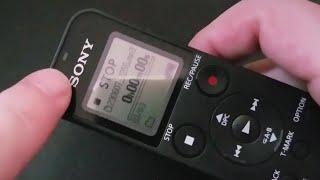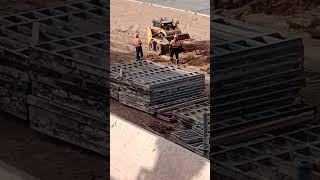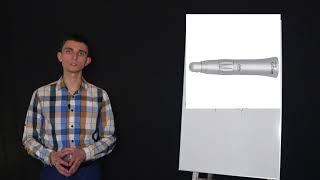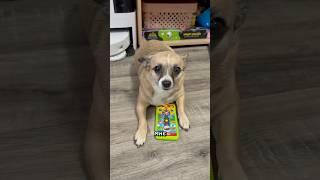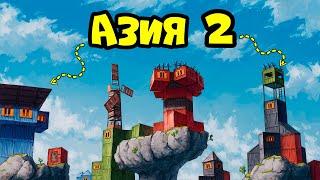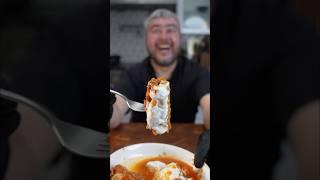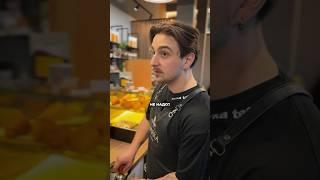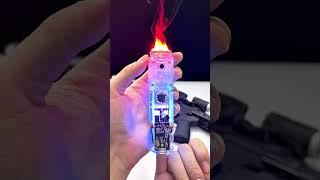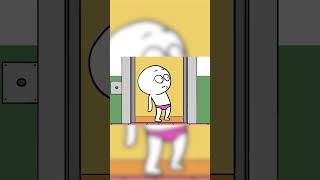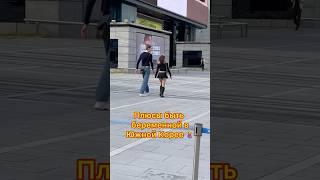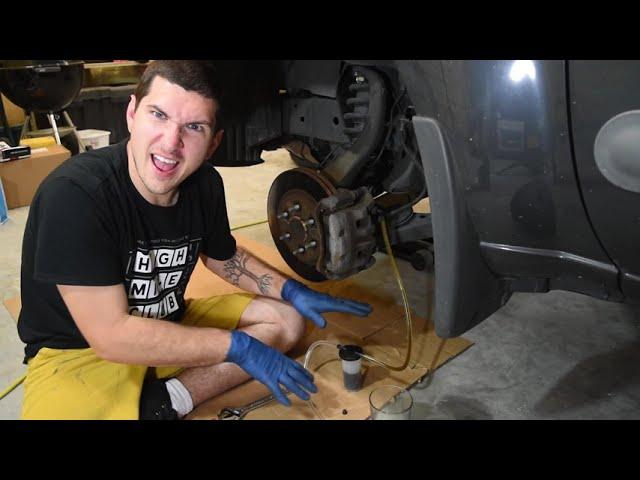
How to bleed Your Brakes (replace brake fluid)
Комментарии:

Hey everyone! I keep getting questions about the air in the lines. I wanted to let you know that the air was NOT coming out of the brake system. It was coming from the seal around the bleed nipple. In retrospect I should have used a hose clamp around the nipple to gently apply pressure and create a better seal. If you do that you should see those bubbles go away. Thanks!
Ответить
Best tutorial on the internet. Clear, concise, and informative. Thank you!
Ответить
You’re supposed to start with the the one furthest away!!
Ответить
Thank you for all your videos. Cheers
Ответить
I can't watch it the whole way through...
Ответить
Why is there air bubbles in the line coming out of the bleeder?
Ответить
Nissan Xterra FSM sequence: right rear, left front, left rear, right front.
Ответить
NEVER USE AN ADJUSTABLE WRENCH! YOU WILL ROUND OFF NUTS, BOLTS, FITTINGS, ETC
Ответить
Good tutorial, would of mentioned when pumping fluid make sure it's clear and no bubbles also use a ring spanner on bleed nipple ,but good video in all
Ответить
Do you have to take the wheels off? I haven’t looked yet.
And is the order; LF, PR, DR, PF
OR… RR, LR, RF, LF? Oh my! I’m getting confused.

Thanks for the video, btw the pump was no more available in the link below 😅
Ответить
One comment. It would have been good to mention that brake fluid absorbs water, so you should always use a freshly-opened bottle.
Ответить
Great video. Nice job!
Ответить
muy bueno gracias
Ответить
You're creating vacuum not pressure. There opposites.
Ответить
I'm confused... I hear a lot of conflicting ways of bleeding brakes. 1) Start from the furthest away 2) Start from the closest away. Which is it?
Ответить
Perfect instruction & very detailed oriented. Thx for sharing my friend
Ответить
You have explained this extremely well. THANK YOU.
Ответить
might be a stupid question: can this be done with the tires on? obv, it's easier to shoot for demo purposes w/tires off, but I think i can probably do this tires on, no?
Ответить
use a small amount of brake grease around the threads of the bleed screw, this will stop the small air bubbles
Ответить
Hello,
Where actually should i start the bleeding for a nissan pathfinder, go through lot of comments here says different.

Adjustable Wrench....total madness.
Ответить
I'm afraid I stopped watching when he went to undo the bleeder with a large adjustable wrench
Ответить
I followed your instructions completely. I did run into trouble when I was adding fluid to the reservoir. I squirted the bottle and some splashed out and landed on my nutsack. Now I'm walking around with half a nut sack. My wife is pissed.
Ответить
This thing is useless for a Fiat 126 / 500.
Ответить
legit This is what the Internet is all about
Ответить
THANK YOU!
Ответить
I’m confused
You said to bleed the caliper closest to the reservoir first, but I’ve seen numerous other people insist that the farthest caliper should be bled first.
Am I confusing the bleeding process with the flushing process?

Thanks Ry! I love your videos. They are A++++
Ответить
👍👍👍👍👍👍
Ответить
Thanks Ry for an extremely informative and helpful video tutorial
on this simple but still confusing, essential maintenance procedure

After watching so many videos and After 3 days all day of trying different methods on bleeding the breaks I finally did it, I have breaks once again. With new rotors and pads on all four installed and full flush and it's now working better then ever I'm set. I'm glad I don't have to go through this again anytime soon. 👌👇🤘💪
Ответить
I always thought it was "start furthest away"?
Ответить
Are you Crazy using your Beer Glass? Never sacrifice your Beer glass! LOL Maybe you can wash it with Brake clean! LOL Great video thanks, One guy said to do the furthest caliper firs at least with Gravity feed on a c3 corvette.
Ответить
Great video man well explained
Ответить
Really great explanation man!!! Keep up the good work!
Ответить
good job
Ответить
Why can't my mechanic figure this out !!!
Ответить
You are wrong. Always start with the furthest and end with the closest. If reservoir is on the front left, start with right rear, left rear, right front, then left front.
Ответить
Q: Reservoir cap on or off?
Ответить
Thank you!! Managed to do it!
Ответить
Is it bad to just pump the brake pedal to flush the brake lines? Assuming the reservoir is kept topped off.
Ответить
Adjustable wrench???!!!...really ?😂
Ответить
Excellent video. Follow up question...how do I safely clean the cup and hoses and other tools used at home? Thanks!
Ответить
Super cool Very thorough👍Thank You!👊
Ответить
ok I tried that - a few comments:
1) my vacuum pump DID created and hold pressure perfectly when I put my tumb at the end of the tube
2) it did NOT however hold pressure when I connected it to the bleeding nipple, once I've open the valve for bleeding than pressure falls down and liquid will not come out.
3) I tried to put grease on the nipple and adapter - did not help
4) I tried zip tied it - also did not help
5) I tried smaller tube - did not help
6) I tried without adapter (just tube) - did not help even with zip tied and grease
eventually I ended up using a bottle and a friend pumping the brake
what have I done wrong?

Hi! Love your channel. Hope you can help me. I have the very truck, my Xterra brake pedal is a bit heavy. Can you guide me to what can I look for?
Ответить
massive air leak in that vacum hose to bleeder valve connection . a thick grease will help seal that air leak
Ответить
You start from the furthest brake away from the brake cylinder
Ответить
Dude... In contrast to your discussion at the beginning of the video, liquid water is incompressible. Stop saying water compresses. Liquid Water does not compress, the same as liquid brake fluid, and liquids in general (note liquid and fluid are not the same and are NOT interchangeable terms: e.g. Air is a compressible fluid, but it is a gas [compressible] not a liquid [incompressible]). Liquid, like Solid, and Gas is one of the three states of matter. Fluid means the matter has the ability to conform geometrically to a container and is not a state of matter.
You need to understand that when the brakes get hot from use, liquid water in the system can boil, forming steam (the gaseous form of water). This gas (steam) is compressible, and will result in spongy feel and poor performance. Further, water causes rust to form in its presence. If this rust forms along a piston bore, its inconsistent geometry along with its hardness and abrasiveness will compromise the elastomer seal. So, yes water is bad, but not for the reasons you stated. You'll always be better off armed with real knowledge instead of bs and your credibility will ensure people listen to and truly benefit from your teachings.
And I did enjoy your vid. Keep up the good work, just have your facts straight!






